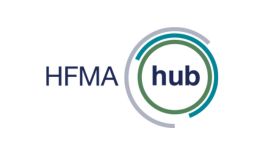Comment / Improving patient safety: a financial imperative
Every year in the UK, thousands of patients are seriously harmed because of unsafe care. In high-income countries, the World Health Organization (WHO) estimates that one in every 10 patients is harmed while receiving hospital care. This harm can be caused by a range of adverse events, with more than 40% of them being preventable.
NHS England estimates, pre-Covid, that there are around 11,000 avoidable deaths annually due to safety concerns. This this likely to be a serious underestimate given the current post-Covid pressures on primary care, social care and hospital care.
Despite our knowledge of these serious issues and the commitment and hard work of many people, avoidable harm is stubbornly not reducing in scale or impact. This is not only a major public health challenge, but also a serious financial one too.
Financial impact of avoidable harm
This personal and societal tragedy is accompanied by a huge financial cost, to the healthcare system, patients and families.
The Organisation for Economic Co-operation and Development (OECD) estimates that the direct cost of treating patients who have been harmed during their care in high-income countries approaches 13% of health spending. Excluding safety lapses that may not be preventable, this figure is considered to be 8.7% of health expenditure. In 2023/24, £160.4bn (85%) of the total Department of Health and Social Care budget is being passed on directly to NHS England. Even saving 5% of this expenditure by reducing preventable harm would release an eye watering £8bn of funds to reinvest in service improvements and additional capacity.
This only forms part of the picture however. There are also additional costs of supporting harmed patients and the indirect social cost of harm more generally.
In the UK, the bill for NHS litigation alone should be a clear indication of the scale of this problem. The cost of settling claims in 2021/22 came to £2.5bn, with a further £13.3bn spent on compensation claims settled in previous years.
Safe organisations are those that are psychologically safe for staff to raise concerns and highlight safety risks. A blame and toxic culture also costs, not only in terms of staff morale, the missed opportunity to improve services, poor retention and high staff turnover, but also financially. While not solely related to patient safety, this forms an important part of the wider costs associated with bullying and harassment in the NHS, recently estimated at costing at least £2.3 billion annually in England.
Without improvements, funds that could be spent to proactively improve the quality and safety of care will instead be wastefully spent on dealing with the cost of error and harm.
Finance directors and patient safety
Finance directors should play a key role in improving patient safety, using their professional insights into systems thinking and becoming aware of their organisation’s key patient safety issues. They also have an essential corporate leadership role to ensure healthcare is both effective and safe. Key priorities for finance directors should include:
- financial incentives: ensuring that existing measures don’t have unintended negative impacts on safety and the development of mechanisms to incentivise safer care.
- board oversight: highlighting the financial implications of avoidable harm in board reports and risk registers; the true costs of unsafe care.
- developing and supporting a business case for safety: investing in re-designing systems, processes and ways of working to deliver safer care and reduce the costs of avoidable harm.
- championing patient safety: safer organisations are more cost-effective ones.
At Patient Safety Learning, we argue that there needs to be a transformation in our approach to patient safety. A core element of this is having standards to inform 'what good looks like' and enable organisations to self-assess against them, providing a framework for prioritising and developing transformational change programmes to ensure patient safety. Through our new patient safety standards we’ve begun working with NHS organisations to build on the NHS patient safety strategy and create change programmes to ensure patient safety is treated as a core purpose of their organisation.
We believe finance directors have a key role in this transformational change, in both exposing the hidden costs of avoidable harm and championing the business case for patient safety improvement.
Patient Safety Learning is a charity and independent voice for improving patient safety. Ms Hughes is a former finance director in the NHS.

This blog was supported by the HFMA Hub. Find out about more Hub activities and resources here.
Related content
We are excited to bring you a fun packed Eastern Branch Conference in 2025 over three days.
This event is for those that will benefit from an overview of costing in the NHS or those new to costing and will cover why we cost and the processes.